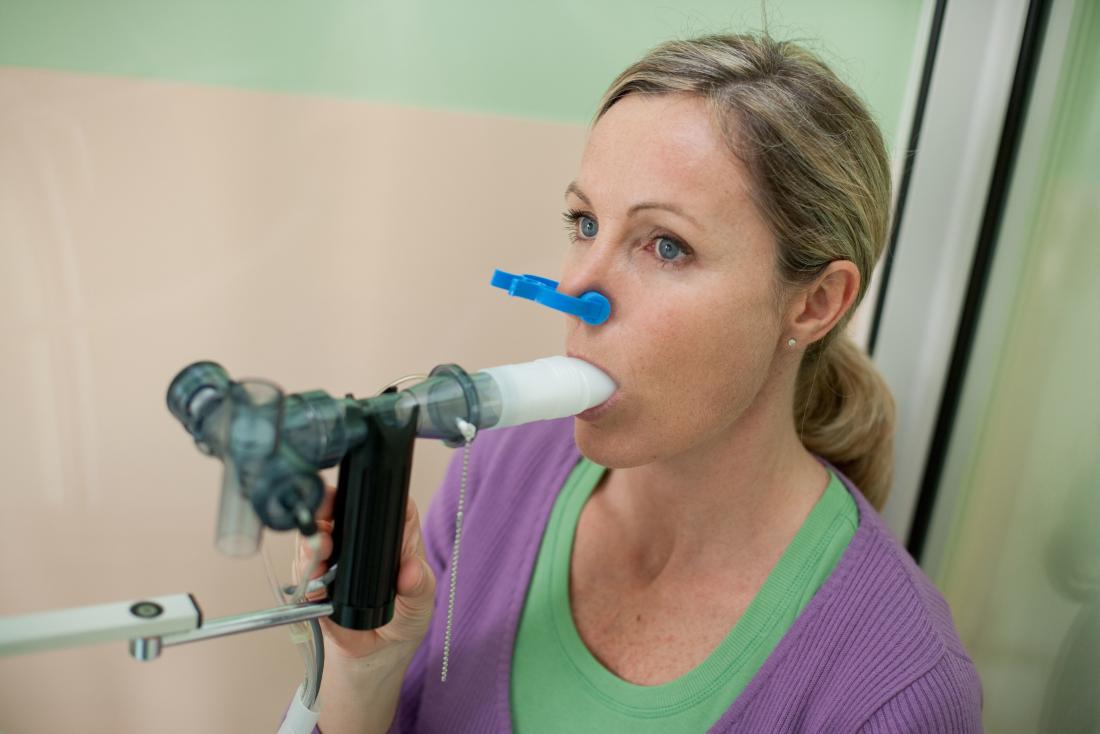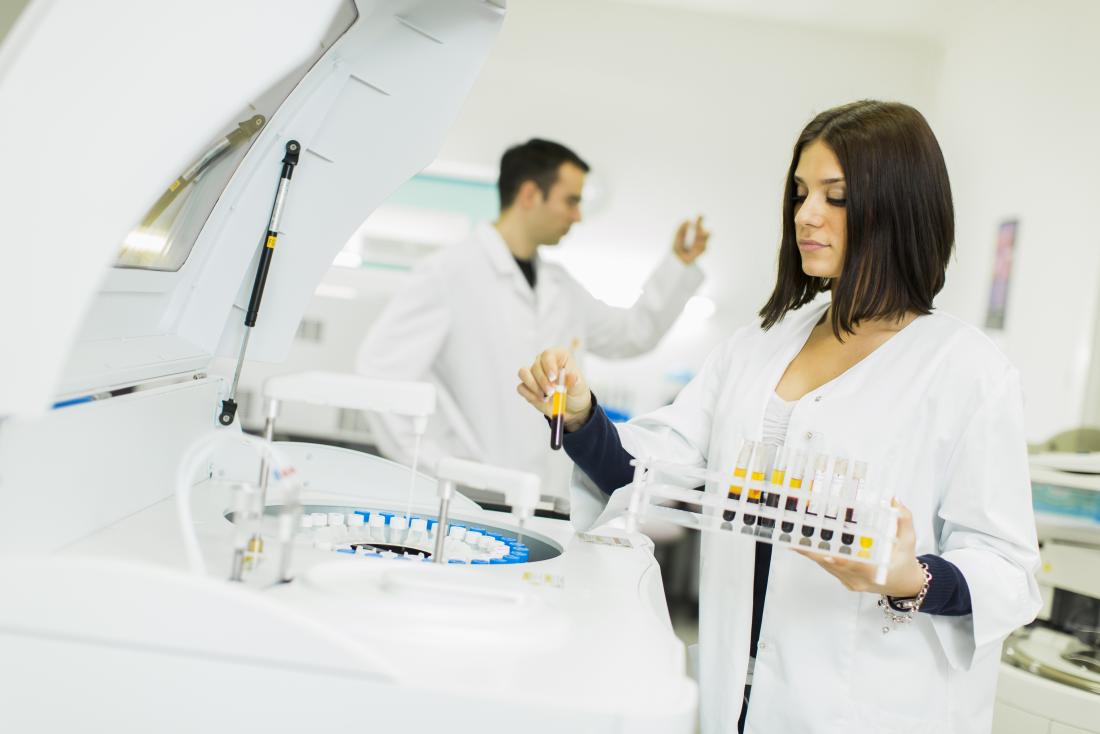Symptoms of COPD, such as wheezing, shortness of breath, and fatigue, can be similar to the signs of other lung conditions.
COPD often gets progressively worse over time. Getting an accurate and early diagnosis allows doctors to develop an effective treatment plan that can help slow the progression of a person’s disease.
Doctors begin diagnosing COPD by carrying out a physical exam and reviewing a person’s medical history. They will usually then order one or more tests to help them confirm a diagnosis.
Common tests doctors use to diagnose people with COPD include:
Pulmonary function tests

Spirometry is a type of pulmonary function test and helps determine how well a person’s lungs are functioning.
Doctors consider pulmonary function tests to be one of the best diagnostic tools for diagnosing COPD. Spirometry is one of the main pulmonary function tests.
Spirometry helps determine how well a person’s lungs are functioning. The test measures the amount of air they can breathe in, and how much and how fast they can expel the air back out of their lungs.
Spirometry can also help a doctor determine if a person has a restrictive or obstructive lung disease.
People with restrictive lung disease have difficulty completely expanding their lungs when they inhale.
Individuals with obstructive lung disease, such as COPD, have trouble getting air completely out of their lungs when they exhale.
For the spirometry test:
- The person wears a clip on their nose to prevent breathing in or out through this.
- The individual puts their lips around a tube-like device that is attached to the spirometry machine.
- When ready, the technician will instruct the person to take a deep breath and then exhale, as quickly and forcefully as possible, until their lungs are empty.
- Usually, a person repeats this process three times, and the technician records the highest value of the test for the final results.
Sometimes, the doctor or technician will ask the person to inhale a bronchodilator before doing the test again.
A bronchodilator is a medication that relaxes the muscles of the airways and opens them up. This allows the doctor to determine if the bronchodilator affects how much air a person can get in and out of their lungs.
Although spirometry is the most common pulmonary function test, a doctor may recommend other types, such as lung diffusion capacity or body plethysmography.
What do the results mean?
The amount of air a person exhales is called the forced vital capacity (FVC). The percentage of air they exhale during the first second is called the forced expiratory volume (FEV1).
Doctors base the diagnosis of COPD on the ratio between FEV1 and FVC. They compare FEV1 and FVC measurements with a predicted value that they base on a person’s age, height, and weight.
An FEV1 and FVC ratio of less than 70 percent of the predicted value indicates that a person may have COPD.
Doctors can also use the FEV1 measurement to help determine the severity of COPD. According to a 2017 report from the Global Initiative for Chronic Obstructive Lung Disease, classification of COPD based on FEV1 is as follows:
- FEV1 above 80 percent is mild
- FEV1 of 50 to 79 percent is moderate
- FEV1 of 30 to 49 percent is severe
- FEV1 of 29 percent or less is very severe
Arterial blood gas

An arterial blood gas test allows doctors to measure oxygen levels in the blood.
An arterial blood gas test is a blood test that doctors use to measure:
- oxygen levels in the blood
- carbon dioxide levels in the blood
- pH, or the acidity, of the blood
- bicarbonate levels in the blood
During this test, a healthcare professional will draw a small sample of blood from the person’s artery. Typically, this will be the radial artery, which is on the inside of the wrist.
The doctor or nurse will then use a machine to analyze the blood sample.
What do the results mean?
The results of a blood gas test let the doctor know how efficiently a person is getting oxygen into their lungs and carbon dioxide out.
People with COPD often have problems getting all the air out of their lungs due to damage to the air sacs. When air becomes trapped, carbon dioxide levels can rise.
Lung damage can also impact oxygen levels, which may be lower than normal in someone with COPD. Different levels of oxygen and carbon dioxide in the blood can also affect pH and bicarbonate levels.
A doctor will not make a diagnosis of COPD based on arterial blood gas alone, but the results can be helpful in reaching a diagnosis.
Alpha-1 antitrypsin (ATT) deficiency screening
The most common cause of COPD is cigarette smoking.
Rarely, COPD can develop as a result of AAT deficiency, which is due to a faulty gene that can run in families.
The liver makes AAT, which is a protein that helps protect the lungs and other organs from damage. People with AAT deficiency lack this protein, which increases their risk of developing COPD and liver disease.
AAT deficiency can also cause COPD to develop at an earlier age than usual.
Doctors can determine if a person has AAT deficiency by taking a blood sample to measure the amount AAT in the blood.
What do the results mean?
Low levels of AAT in the blood indicate that an individual may have AAT deficiency. Usually, the lower the AAT levels in the blood, the higher the risk of developing COPD.
Doctors can use AAT deficiency screening to help them confirm a diagnosis of COPD when there is no obvious cause.
Imaging tests
Doctors sometimes also use imaging tests, such as a CT scan or chest X-ray, to help diagnose COPD.
These tests create an image of the inside of the lungs and chest. Often, a CT scan can provide a greater level of detail than an X-ray.
What do the results mean?
Imaging tests cannot aid a doctor in determining the severity of a person’s COPD. However, they can help confirm a diagnosis or rule out whether another condition is causing the symptoms.
As an example of this, these imaging tests allow a doctor to see if the lungs appear hyperinflated or if the diaphragm is flat, both of which are signs of COPD.
Differential diagnosis

Coughing, wheezing, and shortness of breath are common symptoms of COPD.
A differential diagnosis is important when confirming COPD. Symptoms of COPD can be variable but typically include:
- wheezing
- shortness of breath
- coughing
- increased mucus
- fatigue
- chest pain
Many of the symptoms are also present in other lung and heart diseases, including:
Making a diagnosis of COPD is sometimes a process of elimination. Doctors need to consider other conditions with similar symptoms and rule them out.
To complicate matters further, a person can have COPD along with another condition, making diagnosis more difficult. Identifying other conditions is also essential for developing the best treatment plan.
Takeaway
Along with carrying out a physical examination and checking a person’s medical history, doctors use several tests to diagnose people with COPD. These tests may include pulmonary functions tests, blood tests, and imaging tests. A doctor will typically order more than one test to help them reach a correct diagnosis.
Because COPD is a progressive condition with symptoms that can be similar to other illnesses, getting an accurate diagnosis is vital. Early detection and treatment can help slow the progression of COPD and significantly improve a person’s quality of life.
